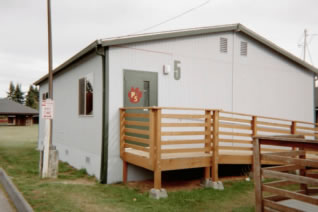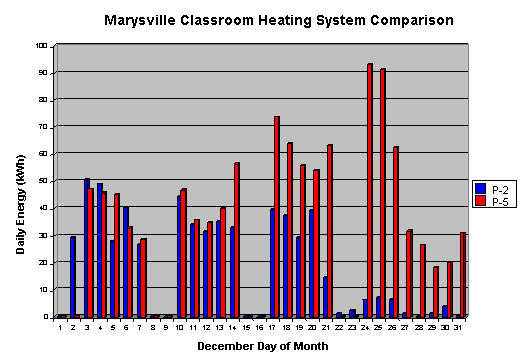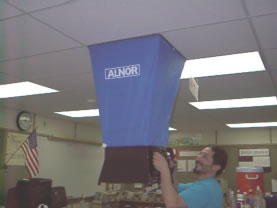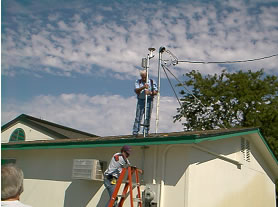| |
|
| |
| Reference
Publication:
Chandra, Subrato, Neil Moyer, Danny Parker, David Beal,
David Chasar, Eric Martin, Janet McIlvaine, Ross McCluney,
Andrew Gordon, Mike Lubliner, Mike McSorley, Ken Fonorow,
Mike Mullens, Mark McGinley, Stephanie Hutchinson, David
Hoak, and Linda Tozer. Building America Industrialized
Housing Partnership, Annual Report - Fourth Budget Period.
04/01/03-03/31/04. |
|
|
| Building
America Industrialized Housing Partnership, Annual
Report - Fourth Budget Period |
|
|
Subrato
Chandra, Neil
Moyer, Danny
Parker, David
Beal, David
Chasar, Eric
Martin, Janet
McIlvaine, Ross
McCluney, Andrew
Gordon, Mike
Lubliner, Mike McSorley, Ken
Fonorow, Mike
Mullens, Mark
McGinley, Stephanie
Hutchinson, David
Hoak, and Linda Tozer |
|
| Florida
Solar Energy Center |
|
| |
|
|
This
is primarily a WSU (and its subcontractors Oregon and Idaho)
and Pacific Northwest National Lab (PNNL) task. Other partners
include FSEC, UCFIE, the State Energy Offices of Oregon and
Idaho, school districts in Portland, Oregon, in Boise, Idaho
and Marysville, Washington, regional utilities, manufacturers,
and other stakeholders in the Pacific Northwest.
The
objective of this task is to promote the adoption of energy
efficient portable classrooms in the Pacific Northwest that
provide an enhanced learning environment, high indoor air
quality, and both substantial and cost-effective energy savings.
BAIHP staff focus on four main goals: (1) offering technical
assistance to portable classroom manufacturers, school districts,
and related organizations, (2) field assessment, monitoring,
and analysis of innovative building technologies and energy
saving features to determine their value, (3) facilitation
of collaborative agreements among regional utilities, northwestern
portable classroom manufacturers and materials and equipment
suppliers, as well as school districts, and state education
departments and their affiliates, and (4) conducting and creating
educational opportunities to advance the widespread adoption
of energy efficient portable classrooms in school districts
nationwide.
The
experiences working on the energy efficient portable were
instructive, particularly in the identification of flaws in
portable classroom design. The difficulties that BAIHP staff
encountered demonstrate the importance of well-defined commissioning
protocols, documentation, and coordination among all personnel
that service and install HVAC equipment.
Findings:
- Portable
classrooms in the Pacific Northwest are occupied about 1225
hours per year, or about 14% of the total hours in a year.
- The
average number of occupants in the standard 28' x 32' portable
classroom provide an internal heat of about 480 kWh/year,
or 8% to10% of space heating requirements.
- Most
of the heat loss in portable classrooms manufactured after
1990 occurs by air leaking through the T-Bar dropped ceilings,
because they have no sealed air/vapor barrier. This newly
created phenomenon occurred with the incorporation of the
less expensive dropped T-Bar ceiling in place of the more
expensive sheet rock used in older portables. Air leakage
also is increased because of unsealed marriage lines - now
used as a low cost method of meeting the state attic ventilation
requirements.
-
Since all portables tested in the project used a simple
seven-day programmable thermostat, the HVAC systems operate
during vacations and holidays.
-
Energy codes in Washington, Oregon, and Idaho are high enough
to make beyond-code envelope measures non cost-effective.
-
Older portable classrooms under removal consideration, could
be retrofitted with new energy efficiency measures at much
less cost than purchasing a new portable classroom. Installing
low-E, vinyl framed windows, insulated doors, T-8 light
fixtures, and caulking and sealing air leaks can all be
cost-effective when refurbishing older portable classrooms.
HVAC system replacement in older portable classrooms will
be the biggest single cost item, ranging from $4500 to $6500.
- CO2
sensors appear to be unreliable as a control strategy.
Those installed by field crews and monitored by dataloggers
in this study did not match the readings shown by the CO2
sensors which controlled the ventilation systems.
Based
on data analysis from years one through four, the following
measures were recommended. New portable classroom procurement,
setup, and commissioning as well as existing classroom retrofit
guidelines produced by the BAIHP study can all be found in
Appendix A.
Recommendations:
- Install
365 day programmable thermostats in all existing portables
and specify these thermostats for new construction.
- In
portable classrooms constructed with T-Bar dropped ceilings,
install an air/vapor barrier above the T-Bar system on the
warm side of the insulation. Completely seal all edges and
overlaps.
- If
roof rafter insulation is used, seal the marriage line at
the roof rafter joint with approved sealant such as silicon
caulk or foam. Make sure there is adequate ventilation
between the insulation and the roof.
- Conduct
an audit of older portables scheduled for disposal to determine
if retrofitting would be more cost effective than purchasing
a new unit.
- Install
occupancy sensors to control the ventilation system.
- Specify
that new portables contain windows on opposing walls.
- Specify
that new portable units contain exhaust fans on the opposite
side of the classroom from the fresh air supply.
School
Partnerships:
 |
| Figure
64. Energy efficient portable classroom at Pinewood
Elementary School in Marysville, Washington. |
 |
|
Figure 65. Graph comparing heating system use of
the Pinewood control portable
(P2) with the energy efficient portable (P5). Note
the energy efficient portable's high energy use during
the Christmas holidays due to
incorrectly configured heating system controls.
|
BAIHP
staff proposed the following recommendations to Pinewood
Elementary:
- Well-defined
commissioning protocols, documentation, and coordination
among all personnel that service and install the HVAC
equipment. This is a critical component of efficient
and healthy classroom operation and should include outside
airflow rate measurements to assess adequate ventilation
and control testing to insure correct system operation.
- Design
changes to the portable classroom manufacturer, including
the use of a structural insulated panel system (SIPS),
tighter ceiling barrier and sheetrock ceilings, elimination
of the vented attic, and relocation of the exhaust fan
to the wall opposite the supply air vent.
- Removal
of current HVAC controls and replacement with both an
occupancy sensor-driven control for the ventilation system
and a heating system programmable thermostat. Staff also
proposed a classroom on/off switch to simplify the system
turnoff during unoccupied summer and school vacations.
- Location
of exhaust fans in future portables on the wall opposite
the supply air vent.
- Window
installation on opposing sides of the classroom to increase
daylight penetration and to assist in passive cross-ventilation.
Based
on the above recommendations, WSU researchers worked with
Marysville school facility manager and customer representatives
from Snohomish Public Utility District to assist them in
setting new construction specifications for 13 portable
classrooms they will procure during the next reporting period.
Marysville School District will specify a completely sealed
ceiling barrier, a new model heating/ventilation system,
a 365 day programmable thermostat, window placement on opposite
sides of the classroom, and exhaust fan placement on an
opposite wall from the fresh air supply.
-
Washington Schools - North Thurston School District:
BAIHP staff also worked with the North Thurston School District
to troubleshoot a portable classroom in Lacey, Washington.
(Please see Figure 66.) The classroom was experiencing
high energy use and poor indoor air quality. BAIHP staff
tested the classroom, made recommendations including opening
the supply dampers, installing a wall side vent to better
ventilate the classroom and discussed the specification
development process with district staff. The North Thurston
School District now is including most of the measures listed
in the new procurement guidelines for their future portable
classroom purchases. The school district will investigate
the feasibility of installing an air/vapor above the T-bar
dropped ceiling and will record costs for making these improvements.
 |
 |
| Figure
66. Ventilation system testing at North Thurston
School District. |
Figure
67. Weather monitoring system installation in the
Boise portable classroom. |
- Boise
School District Retrofit: BAIHP staff located a portable
classroom at the West Boise Junior High School in the Boise
Idaho School District, occupied by a teacher who was interested
in having the classroom monitored and retrofitted. The
teacher also is an Idaho State legislator active in education
issues, which staff believe will increase the chances of
implementing the final recommendations. (Please see Figure
67.)
BAIHP
staff performed a baseline audit, and installed monitoring
equipment to track the classroom's energy use during 2000.
In 2001, the classroom was retrofitted with an efficient
HVAC system (controlled by CO2 sensors), lighting,
and envelope measures. The classroom was then reaudited,
and monitored for the remainder of the year.
BAIHP
staff worked with Pacific Northwest National Laboratories
(PNNL) on the pre- and post-retrofit audits, and installation
of the monitoring equipment. In their capacity of providing
energy management services to the school district, the
local utility Avista Corporation, collected lighting and
occupancy data.
Monitoring
data indicates a 58% reduction in energy usage post-retrofit.
Blower door tests indicate a reduction in air leakage
from nine ACH at 50 Pa to five ACH at 50 Pa. Data also
revealed that heating use actually increased on weekends
and holidays because of lack of internal heat gain and
because the HVAC control systems are not programmed to
shut off on weekends and holidays. The total retrofit
cost was $9,892.
Monitored
data suggests that the CO2 sensor that controls
the HVAC system is not correctly configured. The system
does seem to react to an increase in CO2 levels
early in the day, but does not remain on; CO2
levels only begin to significantly dissipate after one
o'clock PM. BAIHP staff have noted the difficulty of
correctly configuring these sensors in other monitored
classrooms.
- Oregon
Schools: Oregon BAIHP staff worked with the Portland
Public School District to procure two energy efficient classrooms.
These were constructed to BAIHP staff specifications and
included increased insulation, high efficiency windows,
transom windows for increased daylighting, a high efficiency
heat pump, and efficient lighting. Staff videotaped the
construction of one classroom.
Monitoring
equipment was installed by PNNL staff. Estimates using
the software Energy-10 indicated a total energy consumption
of 9200 kWh, or $583 per year at Portland energy rates.
Measured results showed the Oregon portable used about
6600 kWh for the monitored period.
Incremental
costs for the energy efficiency measures were $6,705 over
Oregon commercial code, including approximately $2,500
for the HVAC system. This suggests a simple payback of
10 to12 years.
Initial
blower door tests found air leakage rates of 11.3 ACH
at 50 Pa. BAIHP staff also identified significant leakage
through the T-bar dropped ceiling and up through the ridge
vents. Other monitoring results indicated that the same
HVAC control problems exist with the Oregon classroom
as with the others studied in this project.
The
Energy Efficient model outperformed code level models
in the Portland area. The older the classroom, the more
energy consumed. Even when compared with new code level
models from the same year, the Energy Efficient model
used 35% less energy. Conventional code level classrooms
do not include energy efficient measures which greatly
increases the unit's operating costs. Classrooms built
more than 10 years ago, use twice as much energy as the
efficient model. Those older than 20 years consume more
than three times the amount of energy. From this study,
researches determined that high performance classrooms
can save anywhere from $200 to $1000 dollars a year in
energy costs compared to older, less efficient portables.
A
survey sent to teachers and maintenance staff indicates
a high degree of satisfaction with the efficient portables;
the teachers were most impressed with the improved indoor
air quality and increased light levels due to the daylighting
windows.
Historical
Data Collection: In Idaho, Oregon, and Washington, BAIHP
staff worked with local utilities and school districts to
obtain historic energy use data on portable classrooms. This
data will be used to compare energy usage from the energy
efficient portables monitored in this study.
In
Idaho, BAIHP staff worked with Avista Corporation's energy
manager to collect historic data on 14 portable classrooms
in the Boise School District. The classrooms each were equipped
with discrete energy meters; as a result, BAIHP staff was
able to obtain energy usage data for the past three to four
years. A procedure was developed to collect information on
portables at each school in cooperation with the physical
facilities manager and each school lead. Historic data collection
continues. Site visits and walk-through audits are planned
for these 14 buildings.
WSU
will continue to coordinate with PNNL and FSEC on instrumented
data collection on the portable classrooms being monitored
in Boise, Idaho, Marysville, Washington, and in Portland,
Oregon. WSU will work with Idaho to potentially procure and
test one prototype classroom with SIPS. Evaluate and analyze
the collected data and prepare articles for presentation and
publications.
|
Disclaimer:
This report was prepared as an account of work sponsored by an agency
of the United States government. Neither the United States government
nor any agency thereof, nor any of their employees, makes any
warranty, express or implied, or assumes any legal liability
or responsibility for the accuracy, completeness, or usefulness
of any information, apparatus, product, or process disclosed,
or represents that its use would not infringe privately owned
rights. Reference herein to any specific commercial product,
process, or service by trade name, trademark, manufacturer,
or otherwise does not necessarily constitute or imply its endorsement,
recommendation, or favoring by the United States government
or any agency thereof. The views and opinions of authors expressed
herein do not necessarily state or reflect those of the United
States government or any agency thereof.
|







